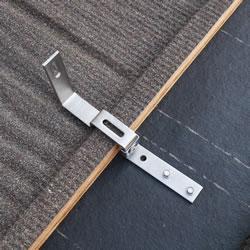Knowing your consumption needs is the primary key to a successful backup power plan. If your black outs are frequent you might consider a more industrial solution with ample energy to run your entire household/business.
A Good Backup Energy Plan
David Raine | Dyocore Inc.
Recent east coast storms and San Diego’s county wide power outage makes a lot of us think about alternative energy solutions for our homes and business to assure power in blackouts.
Creating a dependable back up power system can be complex and often require expensive high maintenance equipment such as batteries. Technology is moving closer towards simplifying the overall solution and in the near future the average home should have readily available out of the box plug and play application towards dependable standby backup power.
Today’s solution is not “out of the box”. Though that does not mean it has to be complex it could be expensive. The primary components are you’ll need to make decisions on are;
- Power source such as solar, wind, hydro, generator, etc.
- Charger/Controller
- Power storage – batteries
- Monitoring System
- Disconnects
- Power Inverter for grid tie
- Utility System Transfer Switch
The Battery Bank or Generator is the most important tool for the success of your system. When your home or business loses power it will be the determining factor of the quantity and quality of the energy stored or being created. At the time when you need it the most is not the time to find out your system does not work.
A good back up power plan is one that is well drafted prior to implementation. What are your backup power consumption needs? How long are the anticipated blackout periods? How long between blackouts? Do you want to convert and use power above your storage capacity during non-emergency day to day power consumption?
Knowing your consumption needs is the primary key to a successful backup power plan. If your black outs are frequent you might consider a more industrial solution with ample energy to run your entire household/business. If blackouts are less likely you might plan for just emergency resource power backup for items such as a TV, radio, heating, minimal lights and possibly one or two appliances. Assessing the power consumption of these items is fairly simple.
 Here’s a great chart that I found at: http://michaelbluejay.com/electricity/howmuch.html
Here’s a great chart that I found at: http://michaelbluejay.com/electricity/howmuch.html
Data for specific models of appliances is available at the Power Consumption Database http://www.tpcdb.com/
Once you determine your consumption needs then you will need to determine both the power you need to create and how much of it you will need to store. A single power generation tool is usually not the most ideal solution since the majority of blackouts are most likely to occur in adverse weather conditions. In storm conditions a solar array might not be the best choice whereas during peak heat months when power loss is typically related to over demand in the community a wind solution might not be optimal in no wind situations quite common in during high heat months of the year. Having a solution that combines components to meet your power production goal is the most ideal solution.
Another consideration is a simple power backup generator. In some cases they are just about the same cost and require a simple fuel source such as gas to run. You’ll need a plan to properly store the fuel for future use and another concern is unused sitting generators, like batteries, for long periods of time tend to not function well at the time they are needed the most if not well maintained.
Now that you have an idea on the amount of power you need, how long you need it, and the type of power generator you can begin putting all the pieces in place. A good site assessment will determine if the equipment desired will be appropriate and provide ample power when turned on.
Though a backup power plan can be quite a project and expensive when you need it you’ll find out it is priceless and time well spent!
Contact us anytime and we would be happy to provide you information and resources towards your backup power solution.sales@dyocore.com
The content & opinions in this article are the author’s and do not necessarily represent the views of AltEnergyMag
Comments (0)
This post does not have any comments. Be the first to leave a comment below.
Featured Product

